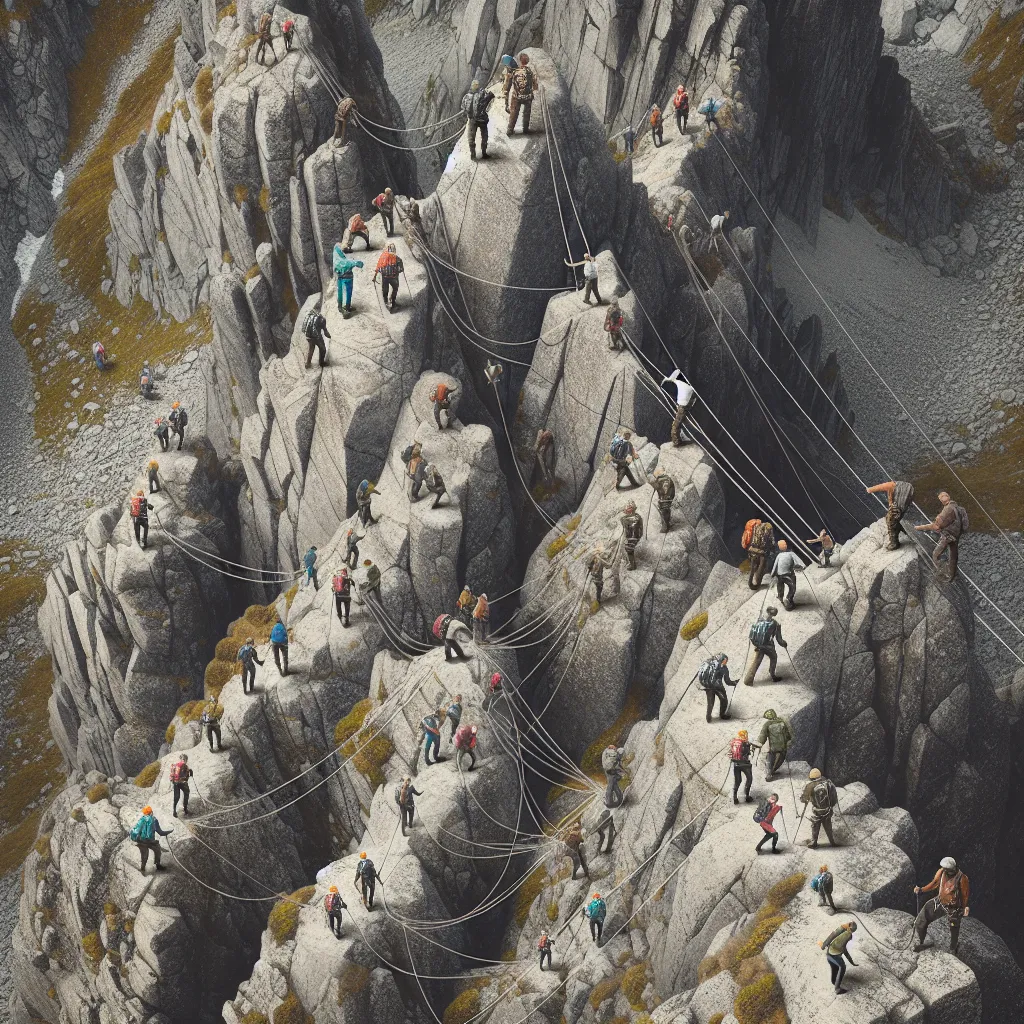
Mastering Different Rope Types for Outdoor Activities
Understanding the Different Types of Climbing Ropes
When it comes to outdoor activities such as rock climbing, alpine climbing, or mountaineering, understanding the different types of climbing ropes is essential for ensuring safety and performance. There are three main types of climbing ropes: dynamic ropes, static ropes, and hybrid ropes. Dynamic ropes are designed to stretch to absorb the impact of a falling climber, making them ideal for lead climbing and top-roping. On the other hand, static ropes have minimal stretch and are suitable for activities like rappelling, caving, and rescue operations where the rope needs to maintain its length and rigidity. Hybrid ropes combine the characteristics of both dynamic and static ropes, offering versatility for various climbing scenarios.
Additionally, climbing ropes come in different diameters, typically ranging from 8.9mm to 11mm. Thicker ropes offer durability and greater resistance to abrasion, while thinner ropes are lighter and more suitable for advanced climbers seeking reduced weight. Understanding the impact force and UIAA fall rating of different ropes is crucial for determining their performance and safety margins. Furthermore, considering the rope length is vital, as it should be sufficient for the intended climbing route and rappelling descent.
In conclusion, mastering the understanding of different types of climbing ropes is fundamental for outdoor enthusiasts engaging in vertical activities. By selecting the appropriate rope type, diameter, length, and performance characteristics, climbers can optimize their safety and enjoyment during their adventures in the great outdoors.
Choosing the Right Rope for Hiking and Mountaineering
When it comes to hiking and mountaineering, choosing the right rope is crucial for ensuring safety and success in outdoor activities. There are various types of ropes suitable for different terrains and purposes, and mastering the art of selecting the appropriate one is essential for outdoor enthusiasts.
For hiking on gentle terrains, a static rope is often sufficient. These ropes have low stretch and are designed for minimal dynamic force absorption. They are best suited for activities such as rappelling, setting up top-rope anchors, and crossing glaciers where the risk of falling is minimal.
On the other hand, dynamic ropes are the go-to choice for mountaineering and rock climbing. These ropes are capable of stretching to absorb the energy of a falling climber, thus reducing the impact force. For mountaineering, a dynamic rope with a thicker diameter and higher impact force rating is preferable, as it provides greater durability and safety in harsh environments.
When selecting a rope for outdoor activities, factors such as diameter, length, weight, and material should be taken into consideration. Thicker ropes offer greater durability and strength, but they also add more weight to the backpack. Additionally, the length of the rope should be suitable for the intended routes and rappelling needs.
In summary, mastering the selection of the right rope for hiking and mountaineering involves understanding the specific demands of the terrain and the activities planned. By carefully considering the terrain, intended use, and technical requirements, outdoor enthusiasts can ensure that they are equipped with the most suitable rope for their adventures.
Mastering Rope Techniques for Rock Climbing and Rappelling
Mastering rope techniques for rock climbing and rappelling is crucial for outdoor enthusiasts who want to safely navigate challenging terrain. When it comes to rock climbing and rappelling, understanding the different types of ropes and their specific uses is essential for a successful and safe outdoor experience.
Dynamic ropes are commonly used in rock climbing due to their ability to stretch and absorb the energy of a falling climber, reducing the impact force. These ropes are designed to be elastic, making them ideal for lead climbing where the potential for a fall exists. Understanding how to properly belay a climber using a dynamic rope is a fundamental skill that all climbers must master to ensure safety.
On the other hand, static ropes are better suited for rappelling and rescue operations where minimal stretch is desired. These ropes provide stability and are designed to withstand heavy loads, making them perfect for activities that require descending into deep crevasses or caves.
Mastering the art of tying various knots is also essential for both rock climbing and rappelling. The figure-eight knot, double fisherman’s knot, and clove hitch are just a few examples of knots that are indispensable for these activities. Knowing when and how to use each knot is vital for creating secure anchor points, attaching oneself to the rope, and connecting with other climbers during belaying.
Additionally, understanding how to inspect ropes for signs of wear and knowing when to retire old ropes are critical aspects of mastering rope techniques for rock climbing and rappelling. Regular inspection of ropes for fraying, cuts, or weak spots can prevent accidents and ensure the safety of everyone involved in these activities.
In conclusion, mastering rope techniques for rock climbing and rappelling involves a comprehensive understanding of the different types of ropes, knot tying skills, and proper rope maintenance. By honing these skills, outdoor enthusiasts can enjoy their adventures with confidence, knowing they have the knowledge to navigate challenging terrains safely.
Exploring the Versatility of Ropes in Outdoor Adventure Sports
When it comes to outdoor adventure sports, ropes are a versatile and essential tool that can be used for a wide range of activities. Whether you’re climbing steep rock faces, navigating through rugged terrain, or setting up a campsite, having the right type of rope can make all the difference in ensuring safety and success. There are several different types of ropes that are commonly used in outdoor activities, each with its own unique characteristics and strengths.
One of the most popular types of rope for outdoor adventure sports is dynamic climbing rope. Designed to stretch to absorb the energy of a falling climber, dynamic ropes are essential for rock climbing and mountaineering. Their elasticity helps to reduce the impact force in case of a fall, providing a crucial safety feature for climbers.
For activities such as setting up a campsite or securing gear, static ropes are the go-to choice. These ropes have little to no stretch, making them ideal for situations where stability and minimal movement are key. They are commonly used for activities like rappelling, caving, and hauling heavy loads.
Another type of rope that has gained popularity in recent years is the dynamic/static hybrid rope. Combining the stretch of a dynamic rope with the low stretch of a static rope, hybrid ropes offer a balance of safety and stability, making them a versatile option for a wide range of outdoor activities.
Regardless of the type of rope chosen, it’s essential to consider factors such as diameter, length, and strength when selecting the right rope for a specific outdoor adventure. Understanding the characteristics and best uses for each type of rope is crucial for mastering the art of outdoor activities and ensuring a safe and enjoyable experience in the great outdoors.



